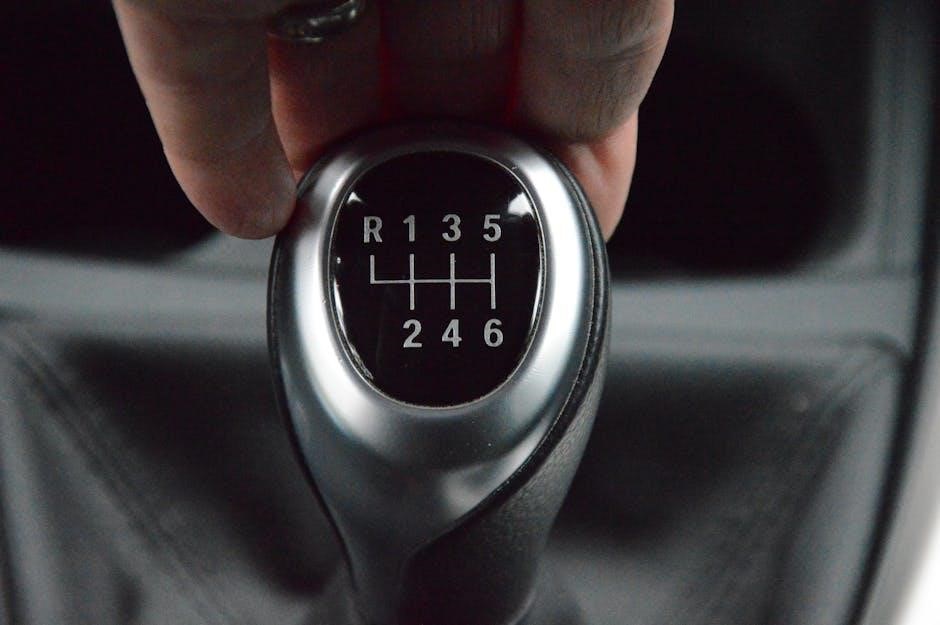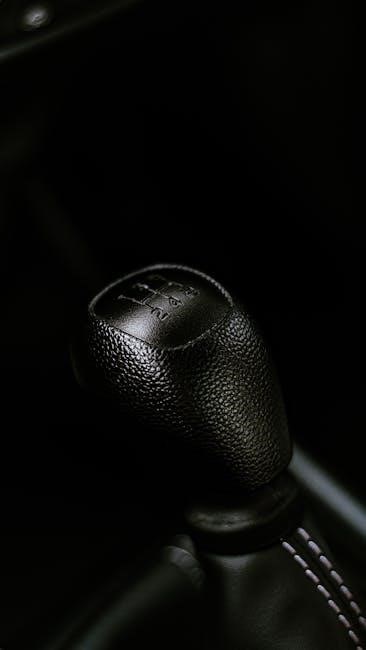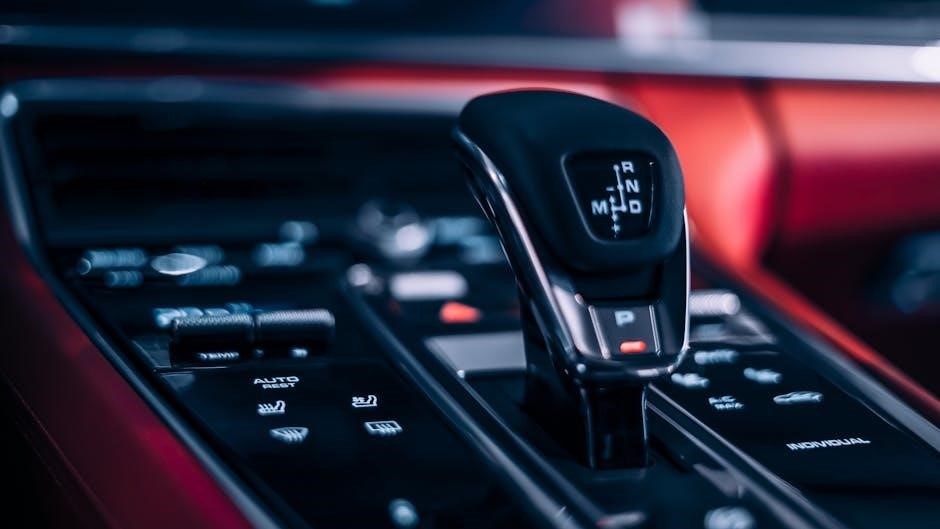paddle shifters vs manual transmission
The debate between paddle shifters and manual transmission continues, with
enthusiasts
weighing the benefits of each, including fuel efficiency and driver control, in modern vehicles, using
latest technology
․
Overview of the Debate
The discussion surrounding paddle shifters and manual transmission has been ongoing, with various opinions and perspectives emerging․
Some individuals argue that paddle shifters lack the engagement and control offered by manual transmissions, while others appreciate the convenience and ease of use they provide․
Additionally, the debate often touches on the topic of performance, with some claiming that paddle shifters can deliver faster and more precise gear changes, especially in high-performance vehicles․
Overall, the debate between paddle shifters and manual transmission is complex and multifaceted, reflecting the diverse needs and preferences of drivers․
The use of latest technology in paddle shifters has improved their performance and efficiency, making them a viable option for many drivers․
As the automotive industry continues to evolve, it is likely that the debate will persist, with ongoing innovations and advancements in transmission technology․
History of Manual Transmissions
Manual transmissions have a long and rich history, dating back to the early days of automotive development․
The first manual transmissions were introduced in the late 19th century, with early models featuring simple gearboxes and clutch systems․
Over time, manual transmissions evolved to become more sophisticated, with the introduction of new technologies and innovations, such as synchronized gearboxes and hydraulic clutch systems․
The 20th century saw the rise of manual transmissions as a popular choice for drivers, with many vehicles featuring manual gearboxes as standard equipment․
Today, manual transmissions remain a beloved option for many driving enthusiasts, who appreciate the control and engagement they offer․
The development of manual transmissions has been marked by significant milestones, including the introduction of new materials and manufacturing techniques, which have improved their performance and durability․
Despite the rise of automatic and semi-automatic transmissions, manual transmissions continue to hold a special place in the hearts of many drivers․

Understanding Paddle Shifters
Paddle shifters offer precise control using
electronic systems
and advanced technology features always․
How Paddle Shifters Work
Paddle shifters are a type of transmission system that allows drivers to manually shift gears using paddles located on the steering wheel․ The paddles are connected to an electronic system that sends signals to the transmission, instructing it to shift gears․ When the driver pulls the right paddle, the transmission shifts up a gear, while pulling the left paddle shifts down a gear․ This design allows for quick and precise gear changes, making it ideal for racing or spirited driving․ The electronic system also ensures that the gears are shifted smoothly and efficiently, without the need for a clutch pedal․ The use of paddle shifters has become increasingly popular in modern vehicles, offering a unique driving experience that combines the benefits of manual and automatic transmissions․ The system is also designed to work seamlessly with other advanced technology features․
Benefits of Paddle Shifters
The benefits of paddle shifters include improved performance and fuel efficiency, as well as enhanced driver control and convenience․ With paddle shifters, drivers can quickly and easily shift gears without taking their hands off the wheel, allowing for a more engaging and immersive driving experience․ The use of paddle shifters also reduces driver fatigue, as there is no need to constantly press the clutch pedal and shift gears manually․ Additionally, paddle shifters can improve safety by allowing drivers to keep their hands on the wheel and eyes on the road, even when shifting gears․ Overall, the benefits of paddle shifters make them a popular choice for drivers who want a fun and convenient driving experience․ The technology has also improved significantly, making it a reliable and efficient option for many vehicles, with various manufacturers incorporating it into their designs․

Comparison to Manual Transmissions
Manual transmissions offer driver control, while paddle shifters provide convenience and ease, using
technology
and innovative designs, for a unique driving experience always․
Traditional Manual Transmissions
Traditional manual transmissions have been a staple of driving for decades, with many enthusiasts swearing by their responsiveness and control․ These transmissions typically feature an H-pattern or sequential configuration, allowing drivers to manually shift gears using a clutch pedal and gear lever․ The physical interaction with the gear lever and clutch pedal provides a sense of connection to the vehicle, making driving a more engaging experience․ Traditional manual transmissions are often preferred by driving enthusiasts, as they allow for a high degree of control over the vehicle’s gearing and acceleration․ However, they can be more difficult to master, especially in heavy traffic or hilly terrain, requiring a great deal of practice and skill to use effectively, with many benefits, including better fuel efficiency and longer engine life, when used properly, in various driving conditions․
Engagement and Control
The level of engagement and control offered by paddle shifters and manual transmissions is a key point of comparison․ Paddle shifters provide a convenient and easy-to-use interface, allowing drivers to shift gears quickly and effortlessly․ However, some drivers find that paddle shifters lack the tactile feedback and physical interaction of a traditional manual transmission․ In contrast, manual transmissions offer a more immersive driving experience, with the driver fully engaged in the process of shifting gears and controlling the vehicle’s speed․ The sense of connection to the vehicle and the road is heightened, making driving a more enjoyable and rewarding experience․ Many drivers prefer the feeling of being in control, with the ability to anticipate and respond to changing road conditions, using the
clutch pedal and gear lever
to modulate speed and acceleration, in a variety of driving situations․

Real-World Applications
Paddle shifters and manual transmissions have various
practical uses
in daily driving and racing scenarios always․
Racing and Performance
In the realm of racing and performance, paddle shifters have become a popular choice among drivers, offering quick and precise gear changes․
With the use of
advanced technology
, paddle shifters can provide faster shift times and improved performance․
This is particularly beneficial in high-performance vehicles, where every second counts․
The ability to shift gears quickly and smoothly can make a significant difference in racing scenarios․

Additionally, paddle shifters can reduce driver fatigue, allowing them to focus on the road and maintain control of the vehicle․
Overall, paddle shifters have become an essential component in racing and performance vehicles, providing a competitive edge and enhanced driving experience․
The use of paddle shifters in racing has also led to the development of more advanced transmission systems, further improving performance and efficiency․
As a result, paddle shifters have become a staple in the world of racing and performance driving․
Everyday Driving
In everyday driving, paddle shifters offer a convenient and easy-to-use alternative to traditional manual transmissions․
With the ability to shift gears manually using the paddle shifters, drivers can enjoy a more engaging driving experience․
The use of paddle shifters in everyday driving can also improve fuel efficiency, as drivers can optimize gear shifts to suit their driving style․
Furthermore, paddle shifters can reduce driver fatigue in heavy traffic or hilly terrain, where frequent gear shifts are required․
In addition, paddle shifters can provide a smoother driving experience, as the transmission can adjust to the driver’s input․
Overall, paddle shifters are well-suited for everyday driving, offering a balance of convenience, performance, and efficiency․
The simplicity and ease of use of paddle shifters make them an attractive option for drivers who want a more engaging driving experience without the complexity of a traditional manual transmission․
This makes paddle shifters a popular choice for many drivers․
Paddle shifters and manual transmissions have unique benefits, with
drivers
choosing based on personal preference and driving style considerations always․
The choice between paddle shifters and manual transmission ultimately depends on individual preferences and driving habits, with some
drivers
valuing the ease of use and convenience of paddle shifters, while others prefer the control and engagement of manual transmissions․
Some enthusiasts argue that paddle shifters lack the tactile experience and connection to the vehicle that manual transmissions provide, while others appreciate the ability to shift gears quickly and effortlessly․
Additionally, the debate between paddle shifters and manual transmissions also involves considerations of fuel efficiency, performance, and maintenance costs, with each type of transmission having its own strengths and weaknesses․
Ultimately, the decision between paddle shifters and manual transmission comes down to what matters most to the driver, whether it be convenience, control, or a combination of both, and
research
is necessary to make an informed decision․
